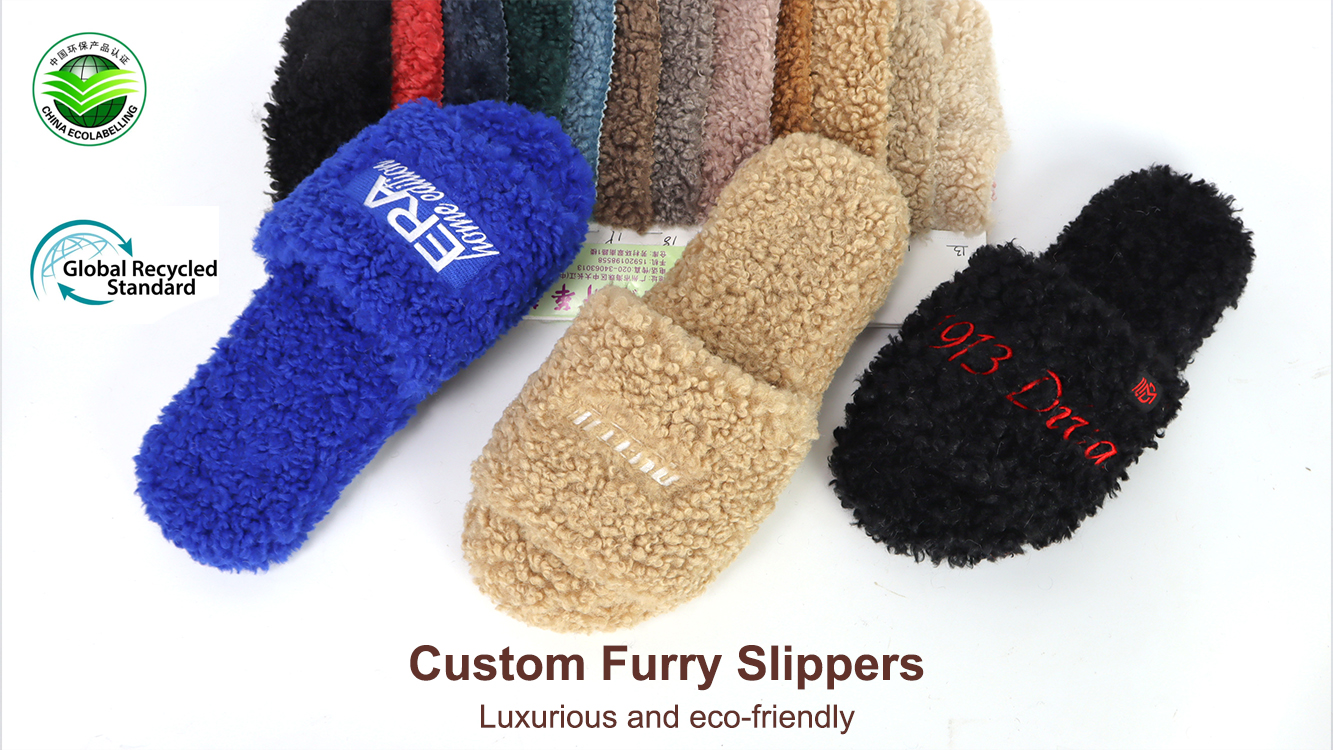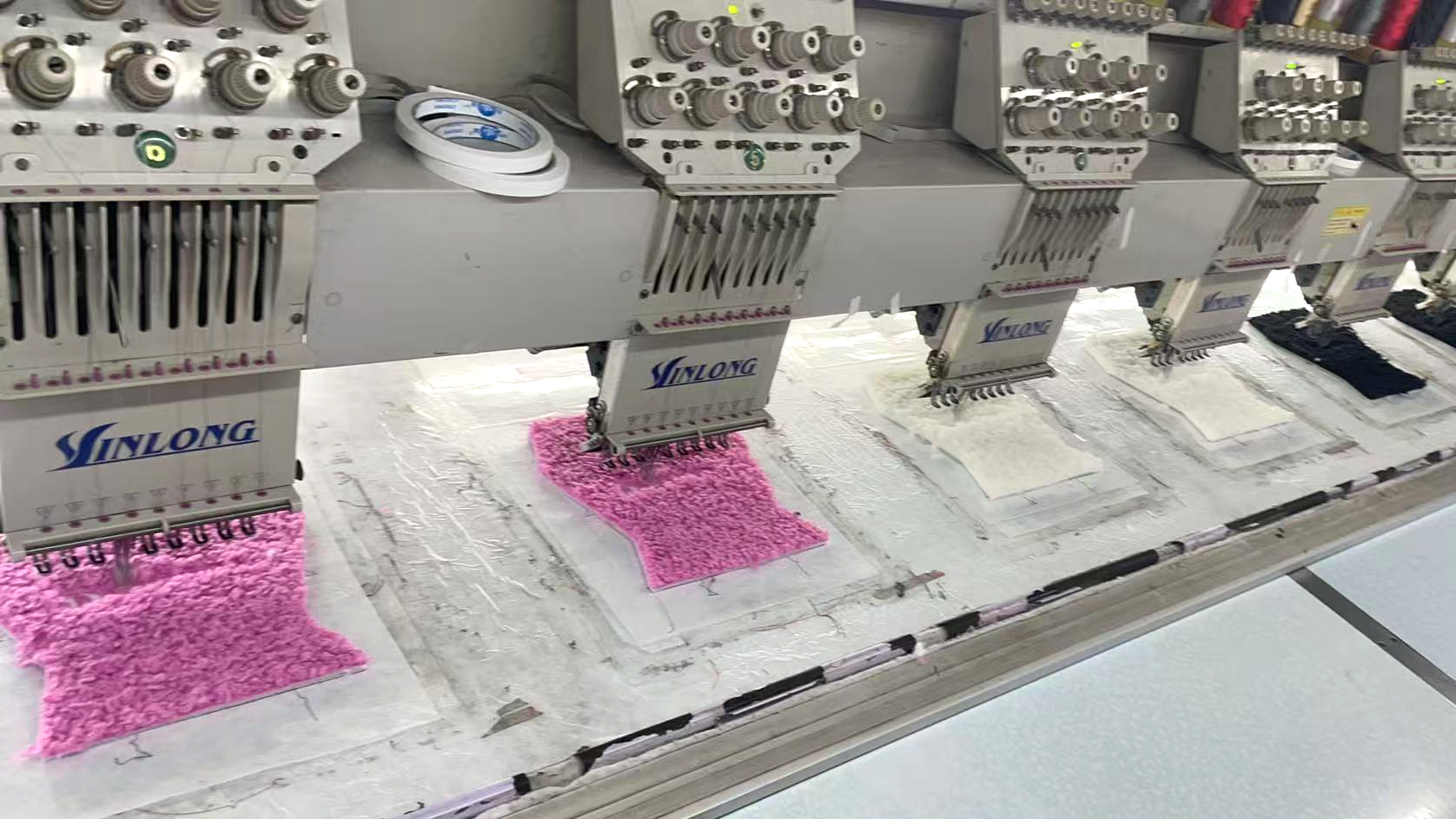The market is craving comfort, but not at the planet's expense. More people want cozy footwear that reflects their eco-conscious lifestyle.
Eco-friendly furry slippers are designed with renewable materials and ethical production, offering both comfort and sustainability in one product. Brands are meeting this demand with customizable, stylish options.

Shoppers today want products that make them feel good—physically and morally. That's why sustainable slippers are taking off. Let’s explore how brands and manufacturers are leading the way in this growing market.
Why Are Eco-Friendly Materials in Furry Slippers So Popular Now?
The rise of climate anxiety and consumer awareness is driving people to rethink what they wear at home. And yes, even slippers matter.
Eco-friendly furry slippers use materials like recycled polyester1, organic cotton2, and responsibly sourced wool3. These choices reduce waste and emissions, creating a product that’s warm, soft, and guilt-free.

Types of Eco-Friendly Materials in Furry Slippers
| Material | Eco Benefit | Comfort Factor |
|---|---|---|
| Recycled Polyester1 | Cuts down plastic waste | Soft, durable, and easy to clean |
| Organic Cotton2 | Grown without harmful pesticides | Breathable and skin-friendly |
| Responsibly Sourced Wool3 | Biodegradable and renewable | Warm and moisture-wicking |
| Recycled EVA Soles4 | Reduces landfill waste | Lightweight and shock-absorbing |
In my experience, buyers from designer brands and trendy online stores both look for these materials. They not only ask for eco-reports but also want stylish, trendy designs. This combination keeps their customers happy and loyal.
What Are Brands Doing to Stand Out in the Eco-Friendly Slipper Market?
It's not enough to just use green materials. Brands must also deliver trendy styles and smart customization. That’s where the winners stand out.
Brands succeed when they offer custom logos, colors, and limited editions. This makes their eco-friendly furry slippers not only sustainable but also desirable and on-trend.

Key Strategies for Brands in the Sustainable Slipper Market
| Strategy | How It Helps | Who’s Using It |
|---|---|---|
| Small-Batch Customization | Reduces inventory waste | Trendy online brands |
| Custom Logos & Designs | Builds brand identity | Designer brands |
| Fast Production Cycles | Matches seasonal fashion trends | Both small and large brands |
| Eco-Certifications & Reports5 | Builds consumer trust | High-end fashion buyers |
I’ve worked with brands like Amelie, who insist on customizing every detail while keeping it sustainable. This often means coordinating multiple factories and balancing design with compliance. It’s a challenge, but it’s the future of fashion.
Can Small Orders Still Be Eco-Friendly?
Yes, and this is what many small trendy brands are struggling with. They want small batches to reduce waste but suppliers often push for large MOQs.
By partnering with factories open to small-batch production and holding eco-friendly certifications, brands can launch sustainable products without over-ordering. I’ve built relationships with these kinds of factories over the years.

How Small-Batch Production Supports Sustainability
| Advantage | Environmental Benefit | Business Benefit |
|---|---|---|
| Low MOQ | Reduces overproduction waste | Supports agile product launches |
| Made-to-Order Production6 | Minimizes unused stock | Matches exact market demand |
| Localized Sourcing | Reduces transportation emissions | Faster turnaround times |
One of my clients, Rural, grew their business by offering small batches of custom furry slippers. We helped them manage production and logistics efficiently so they could focus on marketing and trends.
What Challenges Do Eco-Friendly Slippers Still Face?
Sustainability is not easy. Rising material costs, complex supply chains, and inconsistent demand still make this market tricky.
Companies must balance cost, trend, and eco-compliance. It's a constant effort to find new materials, optimize production, and educate consumers who still compare prices without considering sustainability.
Key Challenges in the Sustainable Slipper Industry
| Challenge | Impact on Business | Possible Solutions |
|---|---|---|
| High Cost of Eco Materials | Increases retail prices | Balance with best-selling styles |
| Complex Supply Chains | Delays in production | Work with experienced partners |
| Consumer Price Sensitivity | Slower adoption of sustainable options | Educate consumers through branding |
In my own work, managing production schedules across 8 partner factories is like solving a puzzle. But this is what helps us deliver on time without compromising on sustainability.
Conclusion
Eco-friendly furry slippers meet today’s demand for comfort with conscience. Brands that combine style, sustainability, and customization will lead this growing market.
Footnotes
-
Learn how recycled polyester reduces plastic waste while offering comfort and durability. ↩ ↩
-
Understand why organic cotton is a safer, more eco-friendly alternative to conventional cotton. ↩ ↩
-
Explore how responsibly sourced wool supports animal welfare and environmental sustainability. ↩ ↩
-
Discover how recycled EVA reduces landfill waste and offers comfort in footwear soles. ↩
-
See which eco-certifications help build consumer trust in sustainable fashion brands. ↩
-
Learn how small-batch production minimizes overproduction and supports sustainable fashion. ↩

